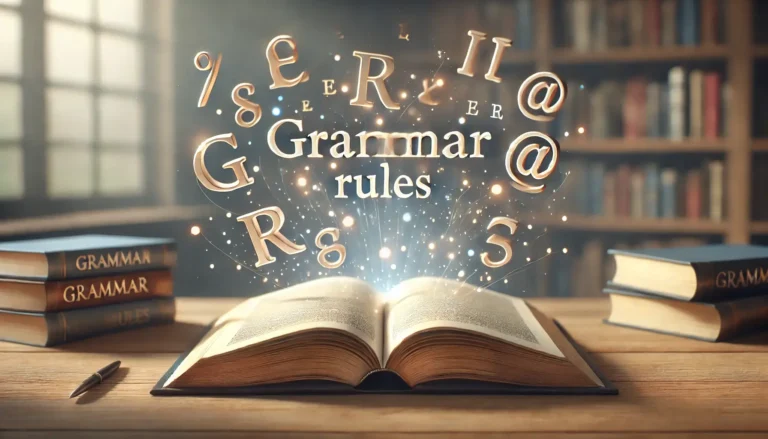Pronouns are an integral part of word classes in particular and of English grammar in general, playing a key role in avoiding repetition and improving the flow of sentences. Without pronouns, our language would be filled with unnecessary repetition, making communication cumbersome and difficult to follow.
For example, imagine saying, “Kaunda went to Kaunda’s car because Kaunda wanted to drive Kaunda’s car.” It sounds awkward and unclear. Pronouns help streamline such sentences into, “Kaunda went to his car because he wanted to drive it.”
This article will delve into the various types of pronouns, how they differ from nouns and determiners, and how they function within sentences.
Understanding these nuances helps both spoken and written communication become clearer, more concise, and easier to understand.
What Are Pronouns?
Pronouns are words used to replace nouns in a sentence, making speech or writing more fluid and avoiding redundancy. They can represent people, objects, places, or ideas, depending on the context.
For instance, instead of repeating a person’s name in every sentence, pronouns like “he,” “she,” or “they” are used. Pronouns are also essential when referring to something that has already been mentioned, ensuring clarity without the need to constantly repeat the same words.
Examples:
- “Kaemba has a new bike, and she loves it.”
- “Kaunda lost his keys, but he found them later.”
- “The dog chased its tail until it got tired.”
In these examples, the pronouns “she,” “he,” and “it” replace the nouns “Kaemba,” “Kaunda,” and “dog,” respectively, making the sentences clearer and more concise.
Pronouns vs. Nouns
While both nouns and pronouns refer to people, places, things, or ideas, they serve distinct purposes. Nouns are specific and identify a person, place, or thing by name, such as “Kaunda,” “car,” or “book.” Read an article about functions of nouns.
Pronouns, on the other hand, are used to stand in for those nouns once they have been introduced, helping to avoid repetitive usage of the same word. By reducing repetition, pronouns make sentences less awkward and easier to read or understand.
Examples:
- Noun: “The teacher gave Kaunda a book. Kaunda liked it.”
- Pronoun: “The teacher gave Kaunda a book. He liked it.”
In the second example, “he” replaces “Kaunda” in the second sentence to avoid redundancy. The sentence flows more smoothly without losing clarity.
Pronouns vs. Determiners
Pronouns and determiners serve different roles in grammar. While pronouns replace nouns entirely, determiners work alongside nouns to clarify which noun is being referred to.
Determiners such as “my,” “this,” and “those” are placed before a noun to provide more context or specification. Pronouns, on the other hand, are independent and do not require a noun to accompany them.
Examples:
- Determiner: “This is my pen.” (The determiner “my” clarifies ownership of the pen)
- Pronoun: “Mine is blue.” (The pronoun “mine” replaces “my pen” completely)
In these examples, determiners like “my” specify the noun, while pronouns like “mine” entirely replace the noun.
Personal Pronouns (First-, Second-, and Third-Person)
Personal pronouns refer to specific people or things and are divided into three categories: first-person, second-person, and third-person.
First-person pronouns are used by the speaker to refer to themselves, second-person pronouns address the listener, and third-person pronouns refer to people or things that are being talked about.
First-person pronouns:
- Singular: I, me
- Plural: We, us
- Examples:
- “I am learning English.”
- “We went to the store.”
Second-person pronouns:
- Singular and plural: You
- Examples:
- “You are doing great.”
- “Did you finish the project?”
Third-person pronouns:
- Singular: He, him, she, her, it
- Plural: They, them
- Examples:
- “He is a teacher.”
- “They are playing outside.”
Personal pronouns adjust based on whether the subject is singular or plural, and they change form depending on whether they are the subject or object of the sentence.
Demonstrative Pronouns
Demonstrative pronouns are used to point to specific things, emphasizing their proximity in terms of space or time. These pronouns are this, that, these, and those.
“This” and “these” refer to things that are close, while “that” and “those” refer to things farther away. Demonstrative pronouns allow speakers to specify objects clearly without needing to repeat the noun.
Examples:
- “This is my laptop.” (Refers to something nearby)
- “That is an amazing view.” (Refers to something farther away)
- “These are my keys.” (Refers to nearby items in plural)
- “Those are your shoes.” (Refers to distant items in plural)
In these examples, the demonstrative pronouns make it clear what object or concept is being referred to in terms of proximity or distance.
Take a quiz on pronouns
Based on this topic, we have created a quiz which you can take by clicking the button.”
Interrogative Pronouns
Interrogative pronouns are used to ask questions and are key in seeking information about people, places, or things.
Common interrogative pronouns include who, whom, whose, which, and what. These pronouns allow for the formulation of open-ended questions that require further clarification.
Examples:
- “Who is calling?” (Asking for the identity of a person)
- “Whose bag is this?” (Asking about ownership)
- “What do you want for lunch?” (Asking for a choice or preference)
Interrogative pronouns help create questions that can specify or inquire about people, objects, or ideas, and they are essential in dialogues for gathering information.
Relative Pronouns
Relative pronouns are used to connect clauses or phrases to a noun or pronoun in the sentence. These pronouns introduce relative clauses, which provide extra information about the subject or object in the sentence.
Common relative pronouns include who, whom, whose, which, and that.
Examples:
- “This is the student who won the competition.” (Relative clause provides more information about the student)
- “The house, which is on the corner, is for sale.” (Adds descriptive information about the house)
- “She met someone whose car broke down.” (Clarifies a relationship of ownership)
Relative pronouns play an essential role in adding important details to sentences without the need for additional sentences or repetition.
Indefinite Pronouns
Indefinite pronouns refer to nonspecific people, places, or things. They do not point to a particular noun, but rather to something more general.
Indefinite pronouns include someone, everyone, anyone, no one, something, everything, anything, and nothing.
Examples:
- “Everyone enjoyed the concert.” (Refers to all people, but nonspecifically)
- “I need something to write with.” (Refers to an undefined object)
- “Does anyone know the answer?” (Refers to an unspecified person)
Indefinite pronouns help express general ideas or concepts without specifying the exact noun being referred to.
Reciprocal Pronouns
Reciprocal pronouns are used when two or more people perform the same action toward each other. There are only two reciprocal pronouns in English: each other and one another.
These pronouns indicate a mutual relationship or action between people or groups.
Examples:
- “Kaunda and Kaemba help each other with their homework.” (Indicates mutual assistance)
- “The teammates encouraged one another after the game.” (Mutual encouragement)
- “They gave gifts to each other during the holiday.” (Mutual exchange of gifts)
Reciprocal pronouns are essential for expressing shared actions or relationships between two or more individuals.
Dummy Pronouns (Expletives)
Dummy pronouns, also called expletives, are pronouns that do not refer to any specific noun or pronoun.
They are used to fulfill the grammatical requirements of a sentence, particularly with verbs like “be” or “seem.” Common dummy pronouns include it and there.
Examples:
- “It is raining outside.” (The pronoun “it” does not refer to any particular noun but is required for the sentence)
- “There are many reasons to study English.” (“There” is used to introduce the subject)
- “It seems like a good idea.” (Again, “it” doesn’t refer to a specific thing)
These pronouns are necessary for grammatical correctness but don’t carry specific meaning on their own.
How Are Pronouns Used in Sentences?
Pronouns are used to replace nouns or noun phrases, ensuring that sentences are not repetitive and that they flow smoothly.
They must agree in number, person, and gender with the nouns they replace. Pronouns help maintain clarity by clearly indicating who or what is being discussed without unnecessary repetition.
- Example 1: “After Kaunda finished the lesson, he reviewed his notes.” (Pronouns “he” and “his” refer back to “Kaunda.”)
- Example 2: “The laptops were on sale, so they sold out quickly.” (“They” replaces “the laptops.”)
- Example 3: “If you have any questions, please ask me.” (Pronouns “you” and “me” facilitate direct communication.)
Proper pronoun usage ensures that sentences are concise and that their meaning is clear.
Frequently Asked Questions
Conclusion
Pronouns are essential tools in the English language that enhance clarity and efficiency in communication.
By understanding and correctly using the various types of pronouns—personal, demonstrative, interrogative, relative, indefinite, reciprocal, and dummy pronouns—you can construct sentences that are both concise and expressive.
Pronouns allow us to connect ideas smoothly, avoid repetition, and engage readers or listeners more effectively. Mastery of pronouns is a vital step in advancing your grammar skills and improving overall language proficiency.







